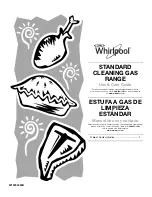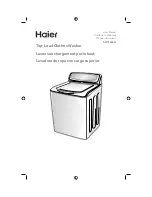
WARNING!
• Neither the gas supply line, electrical supply line nor sprinkler heads shall be located in or near the path of the flue
products from the heater.
• The heater cannot be used in a building with an uninsulated roof or condensation problems could result.
• When installed indoors (Commercial/Industrial Applications Only), natural or mechanical means shall be provided to supply
and exhaust at least 4.0 (Natural) or 4.5 (L.P.) C.F.M. per 1000 BTU/H of the heater’s rated input.
Application Considerations cont’d
Improperly connected gas lines may result in serious injury or death, explosion, poisonous fumes, toxic
gases, asphyxiation. Connect all gas lines in accordance to national, provincial and local codes.
Placement of explosive objects, flammable objects, liquids and vapors close to the heater may result in
explosion, fire, property damage, serious injury or death. Do not store, or use, explosive objects, liquids
or vapor in the vicinity of the heater.
Failure to comply with the published clearances to combustibles could result in personal injury, death
and/or property damage.
In locations used for the storage of combustible materials, signs must be posted to specify the maximum
permissible stacking height to maintain the required clearances to combustibles. Signs must either be
posted adjacent to the heater thermostats or in the absence of such thermostats, in a conspicuous
location.
Hazards Include:
For maximum safety the building must be evaluated for hazards before installing heating system. Examples include,
but are not limited to:
• Gas and electrical lines
• Vehicle parking areas
• Combustible and explosive materials
• Vehicles with lifts or cranes
• Chemical storage areas
• Storage areas with stacked materials
• Areas of high fume concentration
• Lights
• Provisions for accessibility to the heater
• Sprinkler heads
• Adequate clearances around air openings
• Overhead doors and tracks
• Combustion and ventilating air supply
• Dirty, contaminated environment
A critical safety factor to consider before installing the heater is the clearances to combustibles. Clearance to
combustibles is defined as the minimum distance you must have between the infra-red surface, or reflector and the
combustible item. Considerations must also be made for moving objects around the infra-red heater. The following is a
partial list of items to maintain clearances from:
Combustible Items:
Moving Objects:
• Wood
• Overhead doors
• Paper/Cardboard
• Vehicle lifts
• Fabric
• Cranes
• Chemicals
• Hoists
• Wall or roof insulation
• Car was equipment
When installing the infra-red heating system, the minimum clearances to combustibles must be maintained. These
distances are shown in Chart 1.1 and on the minimum clearance to combustibles label found on the heater. If you are
unsure of potential hazards, consult your local fire marshall, fire insurance carrier or other qualified authorities on the
installation of gas fired infra-red heaters for approval of the proposed installation.
1.0 Safety • Applications • Clearance to Combustibles
4





































